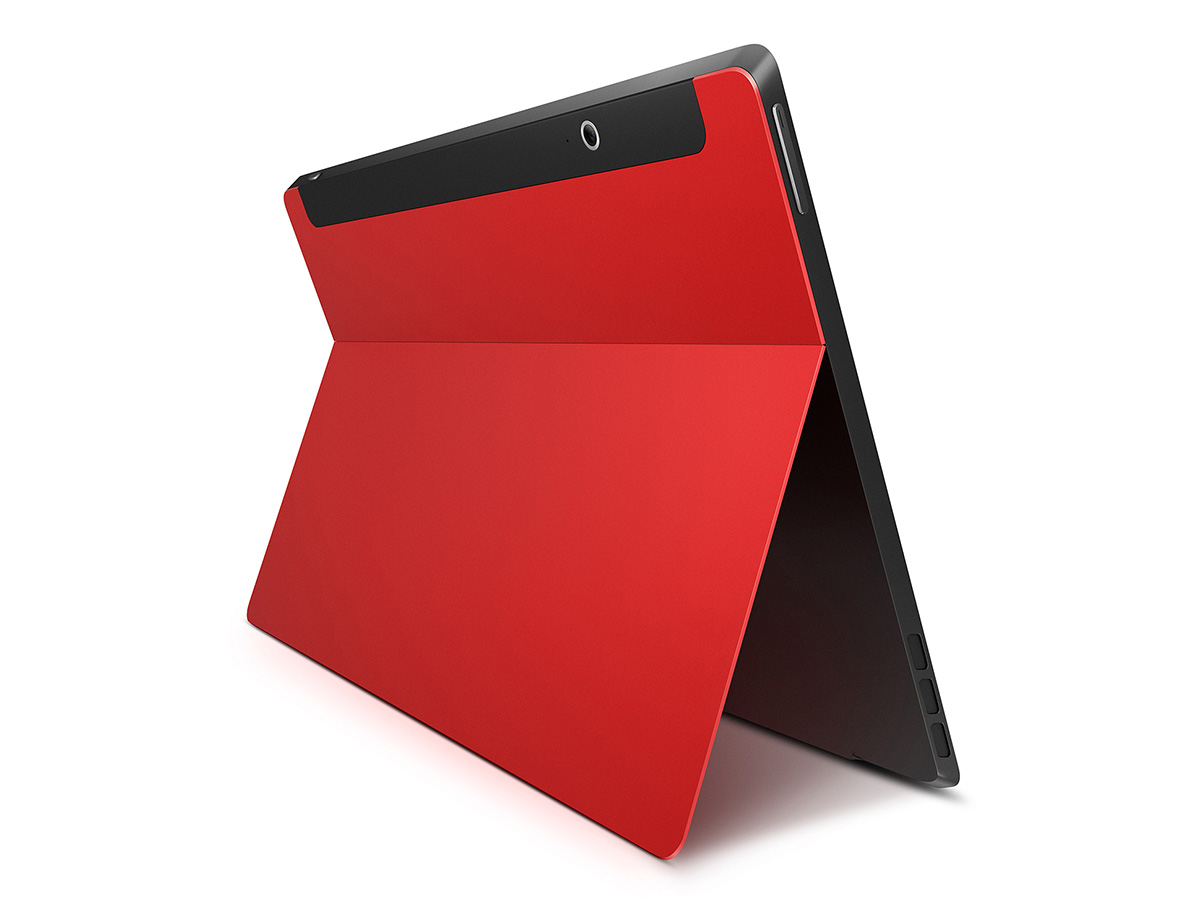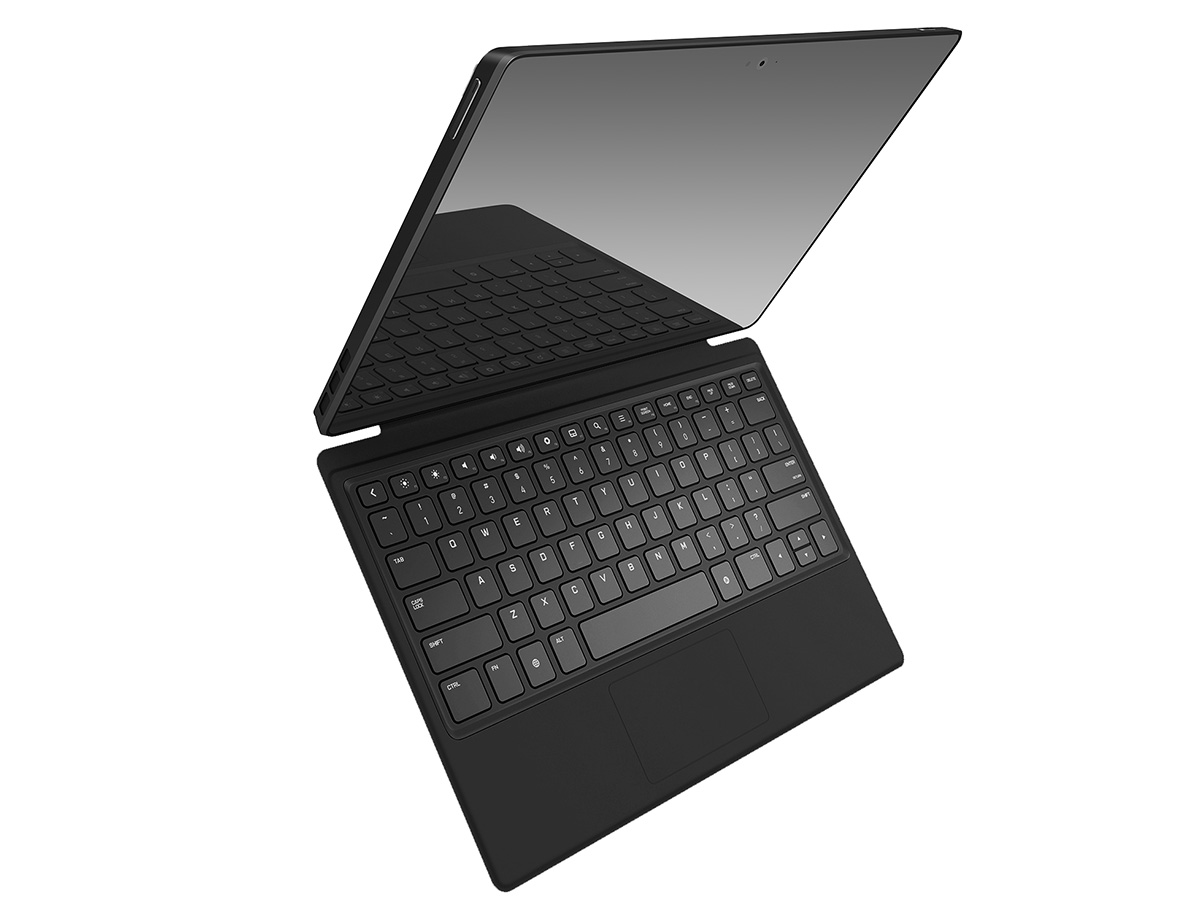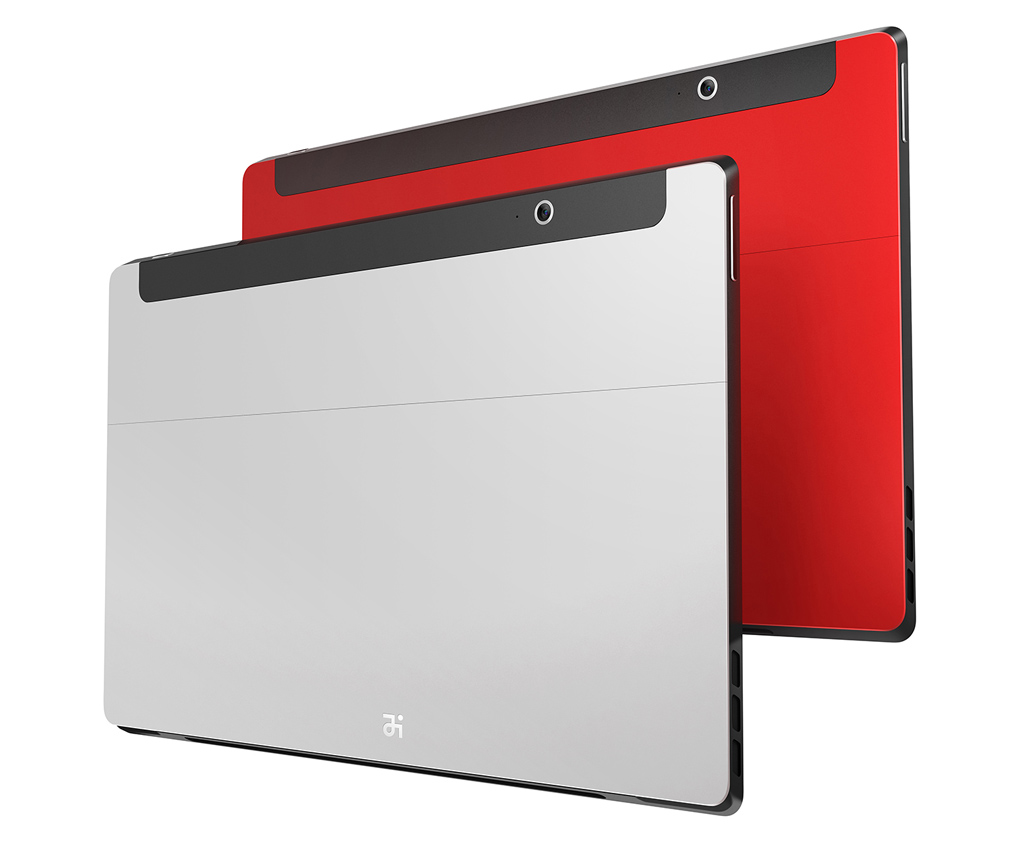Remix Ultra-Tablet: Hands On With A (Sort Of) Microsoft Surface Competitor
There weren't too many tablet announcements at CES 2015, but the Remix Ultra-Tablet by Jide Technology caught our eye. If Microsoft made a version of the Surface Pro 3 that ran Android, similar to the Nokia X line of smartphones that ran a skinned version of Android that resembled Windows Phone, I imagine it would look just like the Remix Ultra-Tablet.
The most striking thing about this tablet is its outward similarity to Microsoft's premium offering. It includes an integrated, two-position (40º/80º) kickstand as well as a keyboard cover with a touchpad that attaches magnetically to the tablet. The Ultra-Tablet even includes tapered edges like the Surface Pro 3, making it easy to mistake it for the more expensive Microsoft tablet.
Tech Specs
| SoC | Nvidia Tegra 4 |
|---|---|
| CPU | ARM A15 (4+1) @ 1.81 GHz |
| GPU | GeForce ULP 72 |
| Memory | 2 GB DDR3L |
| Display | 11.6-inch IPS @ 1920 x 1080 (190 ppi), 16:9 aspect ratio |
| Storage | 64 GB |
| Battery | 8,100 mAh |
| Cameras | Front: 5 MPRear: 5 MP |
| Expansion Ports | microSD slot (up to 128 GB), microUSB 2.0 |
| Connectivity | Wi-Fi 802.11a/b/g/n, Bluetooth 4.0 |
| Dimensions | 189.0 x 295.0 x 9.5* mm |
| Weight | 860 g |
| Operating System | Remix OS (based on Android 4.4.2 KitKat) |
| Price | $449 (est.) |
* thickness without keyboard attached
The overall size and weight of the Ultra-Tablet is also similar to the Surface Pro 3. Where the two designs begin to diverge is the choice of screen. Remix's tablet comes with a lower-resolution 11.6-inch HD IPS screen with a 16:9 media viewing-friendly aspect ratio, versus the more productivity-focused 3:2 ratio of Microsoft's tablet.
The Ultra-Tablet also can't match the processing prowess of the Intel-powered Surface; however, its Tegra 4 SoC doesn't need to run a desktop Windows OS, and its CPU should be sufficient for the typical Android tablet apps. The GeForce ULP GPU is several generations old now and severely underpowered compared to current high-end GPUs, so there will be some UI lag, and gaming will be limited.
Jide Technology's goal is to deliver a device with the longer battery life and lower cost of an Android tablet but with the higher productivity of a PC. Remix OS, a customized version of Android 4.4.2 (a Lollipop upgrade should be coming in April), plays a crucial role in delivering this experience. It's optimized to work with the larger screen and emulates at least some of the look and feel of the Windows 8 OS. The most obvious enhancement is the inclusion of a taskbar along the bottom of the screen. Similar to Windows, it contains icons for all open apps, which makes switching between apps easier and faster than scrolling through a list of cards. Apps are closed by simply swiping up on the taskbar icon.
Remix OS also allows Android phone apps to be run in separate, repositionable windows, allowing for multiple apps to be seen at once. Unlike Microsoft's OS, however, these windows don't appear to be resizable and can't be snapped to the edge of the screen.
Get Tom's Hardware's best news and in-depth reviews, straight to your inbox.
Remix's similarity to Windows carries over into the design for the desktop and included apps, which closely resemble the style of Microsoft's Modern UI. The onscreen elements and controls have a flat appearance, and the icons are simple and clear. Remix OS includes several custom apps, including File Manager, Email Client, Browser, Calendar, Power Manager and App Search, all of which would look perfectly at home running on a Windows tablet. Most of these apps have multiple panes, with the left pane using a solid background color that gets incorporated into the heading text and controls in the other panes. This focus on design makes Remix an attractive-looking OS.
Pairing the 10-point touch screen with the chiclet keyboard and trackpad, which supports gestures, enhances productivity. The keyboard itself uses a standard layout and is of sufficient size to make typing easy; it even supports common PC shortcut keys like CTRL-C for copy. Adding a mouse, either via Bluetooth or USB with the included micro-to-full-size adapter, further blurs the line between tablet and PC.
A startup founded in 2014 by three ex-Google software engineers, Jide Technology outsourced the hardware design of the Remix Ultra-Tablet and partnered with Foxconn for manufacturing, which allows the company to focus on software development, its core strength. Jide Technology is planning a Kickstarter campaign, which will start in the latter half of February, to raise the necessary capital to begin producing its tablet in three different colors: black, red, and silver (the keyboard cover will only come in black initially). A sales strategy for North America is still being developed and no launch date was provided; however, the price should be around $449.
If the Remix Ultra-Tablet comes to fruition, it will be an interesting option for those who desire a tablet with enhanced productivity features. While it doesn't match Microsoft's Surface Pro 3 in performance or features, it will cost almost half as much. Jide Technology is also considering licensing its unique Remix OS to other OEMs, which could spawn more productivity-focused Android tablets in the future.
Matt Humrick is a Staff Editor at Tom's Hardware, covering Smartphones and Tablets. Contact him at mhumrick@tomshardware.com and follow him on Twitter @digitalOut_net. Follow us @tomshardware, on Facebook and on Google+.
-
rwinches 16 GB Model at $349 seems like a better deal.Reply
Remix OS ROM would be great if it caught on and became a standard as then updates/upgrades would be across the board and less HW would be left behind.
On the MS side the new 4 core Adam Z37xx Bay Trail CR 22nm chips that are showing up now in mini PCs and tablets running MS or Android or Both are changing the game, especially with the Windows 8 + Bing deal which comes free for under $250 systems with the stipulation that they ship with Bing as the default search.
I got the ASUS X205TA from BB for $99 it sells for ~$200 on MS site. Once I installed Classic Shell and turned off UI effects like Menu shadows et al. it is great as it has long battery life @ ~10 hours and quick recharge. Z3735F 2 GB 32GB uSD (128 GB max) uHDMI 2 USB 2.0 3.5 Headphone BT WiFi up to n 11.6 1366 x 768 regular size keys because no numpad.
The Celeron two core low cost (Win 8 + Bing) systems bog down quicker despite faster base clock in real world use and aren't as power efficient.
Touchscreens don't mean much on Win systems for me, Maybe for simple Android type . games.
Although I like the idea of convertible systems, I would always want to have the keyboard part with it. I worry that the magnet connection will fail in time or that the system won't balance or the Tab part will come loose if I am using the system lying down not on a table or desk. The ASUS transformer systems do give the option to have expansion in the keyboard like HDD drives and ports but at a cost. The idea is low cost and battery runtime so... I do have my regular Win laptop for more demanding jobs and my desktops and nas/cloud storage so these lite systems have appeal.
AND What is the deal with Chrome Laptops having keycaps in lowercase? -
rwinches There seems to be some confusion about the Phone Mode windows that are for apps that are designed for a phone sized screen. They of course would not be adjustable they are the size and shape of a phone screen. I wonder if the can switch to landscape?Reply
The specs don't include gryo or GPS so it would suggest productivity apps are the target.
It might be that the Ultra Tablet is really just to showcase the Remix OS and the aim is to validate Android as a serious replacement for MS Win. because it can be used for 'real' work, not just games and social networking or videos.
The main thing MS Win has had over all others is standardization, Remix OS on ROM could deliver that. Chrome OS is is on that path too but has a way to go.
UNIX LINUX based systems keep that toolkit style that while flexible and configurable as a plus that also is a minus for standardization. The last thing a workstation user wants to hear is boilerplating, they don't want their system locked down so round and round we go.
Remember when IBM offered 25 million lines of source code free to members for OSF 1?
Plus another 15 million lines for OSF 2 that would add features to support POS (point of sale)?
I do, but instead of one version of OSF 1 we had five, non-standard except for the base kernel, because no one wanted IBM to tell them what to do. -
doron "its Tegra 4 SoC doesn't need to run a desktop Windows OS"Reply
You mean can't, as opposed to an x86 which can run Windows / Linux / Android(-x86) -
stevejnb Looks like a nice enough little unit - though, mainly because it tries to emulate the Surface tablets and the general Windows environment as much as possible. If this is a product that particularly appeals to you, perhaps you should consider just getting a Surface RT model for less, or spending the extra and getting a full Surface pro? At the point where the tablet has a kickstand, and is a flavour of Android which seems built around emulating Windows, why not just for the real deal? Though, I'm sure this will have a niche audience - the "I want Windows but I *HATE* Windows" crowd.Reply -
RedJaron If you're looking for a device like this ( specifically if you're trying to get a Windows-like OS, ) why would you opt for this over an Acer Aspire Switch or Asus Transformer Book for $300? Only reason I can think of is if you absolutely have to have Android ( or absolutely CAN'T STAND Windows. )Reply -
stevejnb You know, thinking about this more... Microsoft must be utterly stupid if they haven't patented that kickstand for tablets. If they haven't though, and other companies are starting to make Surface clones, this is a great thing. After using a Surface for a while, I doubt I would want to buy a tablet without a kickstand - it's just to damned handy an addition to the tablet form factor. I wouldn't mind having an Android tablet with a built in kickstand - not one that emulates Windows at every turn, but rather just a regular old vanilla Android tablet. Make it so!Reply


